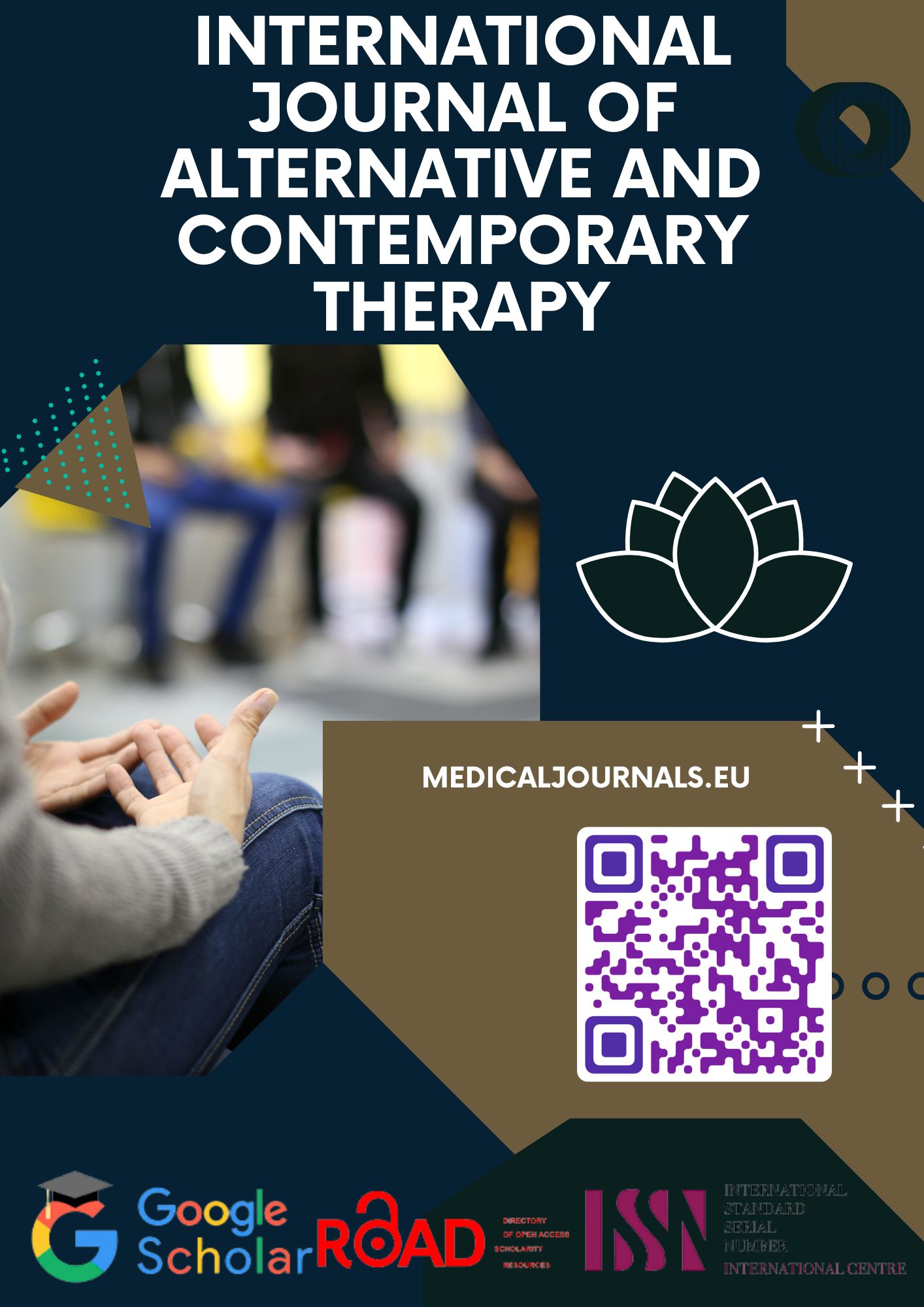The Importance of Insulin-Like Growth Factor and the Relevance of its Research
Keywords:
IGF-I, IGF-II, growth hormons, growth factors, replacement therapyAbstract
It is known that growth hormone is a pleiotropic hormone that causes the growth of all organs by coordinating many physiological processes, including its effect on the nervous system, bones, muscles and fat. Metabolically, growth hormone promotes anabolic action in most tissues except adipose tissue, and its catabolic effect leads to the breakdown of accumulated triglycerides into free fatty acids. On the other hand, insulin-like growth hormone is a hormone that serves to indirectly exercise its activity by stimulating this aforementioned growth hormone. Due to its diverse activity and effectiveness, it encourages consideration of the possibility of its use for diagnostic and therapeutic purposes. In many pathologies of the nervous system, cardiovascular and other organs, its amount may shift to one degree or another, and in this regard, the possibilities of inclusion in diagnostic measures are being considered, based on the magnitude of this shift. However, when treating with insulin-like growth factor, it is very important to regulate its amount, since an overdose when using it or vice versa can lead to a violation of hormonal interaction in the body. This leads to various serious disorders in the body. For this reason, substitution or substitution therapy also requires strict caution when using it when considering the prospects of its use in certain oncological diseases. However, given that the level of IGF-1 expression varies depending on a number of clinical conditions, constant maintenance of IGF-I levels within the normal range allows you to avoid side effects caused by its use, as well as to obtain important promising treatment results.
References
Lewitt MS, Boyd GW. The Role of Insulin-Like Growth Factors and Insulin-Like Growth Factor-Binding Proteins in the Nervous System. Biochem Insights. 2019 Apr 17;12:1178626419842176. doi: 10.1177/1178626419842176
Barzilai N, Huffman DM, Muzumdar RH, Bartke A. The critical role of metabolic pathways in aging. Diabetes. 2012;61:1315–1322.
Daza DO, Sundstrom G, Bergqvist CA, Duan C, Larhammar D. Evolution of the insulin-like growth factor binding protein (IGFBP) family. Endocrinology. 2011;152:2278–2289.
Puche, J.E., Castilla-Cortázar, I. Human conditions of insulin-like growth factor-I (IGF-I) deficiency. J Transl Med 10, 224 (2012). https://doi.org/10.1186/1479-5876-10-224
Bailes J, Soloviev M. Insulin-Like Growth Factor-1 (IGF-1) and Its Monitoring in Medical Diagnostic and in Sports. Biomolecules. 2021 Feb 4;11(2):217. doi: 10.3390/biom11020217
Gusscott S., Jenkins C.E., Lam S.H., Giambra V., Pollak M., Weng A.P. IGF1R derived PI3K/AKT signaling maintains growth in a subset of human T-cell acute lymphoblastic leukemias. PLoS ONE. 2016;11:e0161158. doi: 10.1371/journal.pone.0161158.
Annibalini G., Contarelli S., De Santi M., Saltarelli R., Di Patria L., Guescini M., Villarini A., Brandi G., Stocchi V., Barbieri E. The intrinsically disordered E-domains regulate the IGF-1 prohormones stability, subcellular localisation and secretion. Sci. Rep. 2018;8 doi: 10.1038/s41598-018-27233-3
Zhang WB, Aleksic S, Gao T, Weiss EF, Demetriou E, Verghese J, Holtzer R, Barzilai N, Milman S. Insulin-like Growth Factor-1 and IGF Binding Proteins Predict All-Cause Mortality and Morbidity in Older Adults. Cells. 2020; 9(6):1368. https://doi.org/10.3390/cells9061368
Backeljauw, P.F., Andrews, M., Bang, P. et al. Challenges in the care of individuals with severe primary insulin-like growth factor-I deficiency (SPIGFD): an international, multi-stakeholder perspective. Orphanet J Rare Dis 18, 312 (2023). https://doi.org/10.1186/s13023-023-02928-7
Aguirre, G.A., De Ita, J.R., de la Garza, R.G. et al. Insulin-like growth factor-1 deficiency and metabolic syndrome. J Transl Med 14, 3 (2016). https://doi.org/10.1186/s12967-015-0762-z
Harada, K., Hanayama, Y., Obika, M., Itoshima, K., Okada, K., & Otsuka, F. (2020). Clinical relevance of insulin-like growth factor-1 to cardiovascular risk markers. The Aging Male, 23(5), 1030–1038. https://doi.org/10.1080/13685538.2019.1657083
Werner H and Laron Z (2023) Insulin-like growth factors and aging: lessons from Laron syndrome. Front. Endocrinol. 14:1291812. doi: 10.3389/fendo.2023.1291812
Kubo, H., Sawada, S., Satoh, M. et al. Insulin-like growth factor-1 levels are associated with high comorbidity of metabolic disorders in obese subjects; a Japanese single-center, retrospective-study. Sci Rep 12, 20130 (2022). https://doi.org/10.1038/s41598-022-23521-1
Wrigley S, Arafa D and Tropea D (2017) Insulin-Like Growth Factor 1: At the Crossroads of Brain Development and Aging. Front. Cell. Neurosci. 11:14. doi: 10.3389/fncel.2017.00014
Kasprzak A. Insulin-Like Growth Factor 1 (IGF-1) Signaling in Glucose Metabolism in Colorectal Cancer. International Journal of Molecular Sciences. 2021; 22(12):6434. https://doi.org/10.3390/ijms22126434
Fatani TH. Diagnostic Value of IGF-1 in Growth Hormone-Deficient Children: Is a Second Growth Hormone Stimulation Test Necessary? J Endocr Soc. 2023 Jan 31;7(4):bvad018. doi: 10.1210/jendso/bvad018.
Yuen, K. C. J., Johannsson, G., Ho, K. K. Y., Miller, B. S., Bergada, I., & Rogol, A. D. (2023). Diagnosis and testing for growth hormone deficiency across the ages: a global view of the accuracy, caveats, and cut-offs for diagnosis. Endocrine Connections, 12(7), e220504. Retrieved Apr 29, 2024, from https://doi.org/10.1530/EC-22-0504
Shen Y, Zhang J, Zhao Y, et al. Diagnostic value of serum IGF-1 and IGFBP-3 in growth hormone deficiency: a systematic review with meta-analysis. European Journal of Pediatrics. 2015 Apr;174(4):419-427. DOI: 10.1007/s00431-014-2406-3.
Nielsen J, Jensen RB, Juul A. Growth hormone deficiency in children. Ugeskr Laeger. 2014;176(25):V12130706.
Grimberg A, DiVall SA, Polychronakos C, et al.. Guidelines for growth hormone and insulin-like growth factor-I treatment in children and adolescents: growth hormone deficiency, idiopathic short stature, and primary insulin-like growth factor-I deficiency. Horm Res Paediatr. 2016;86(6):361–397.
Sharma R, Kopchick JJ, Puri V, Sharma VM. Effect of growth hormone on insulin signaling. Mol Cell Endocrinol. 2020 Dec 1;518:111038. doi: 10.1016/j.mce.2020.111038.








